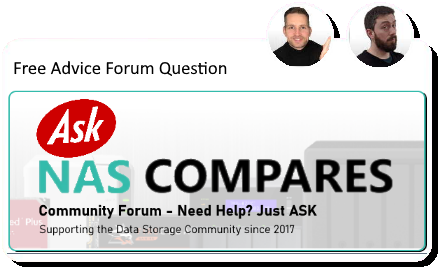07-18-2025, 04:38 PM
Thanks for the kind words and for laying out your question so clearly. Much appreciated.
On your planned setup with the DS1525+ and SAT5221 SSDs, you’re absolutely right that this will already give you excellent performance and very quiet operation. When the entire storage pool is SSD, adding M.2 NVMe cache doesn’t really offer much benefit. Cache is designed to accelerate slower spinning hard drives, but with all-SSD storage you’re already at or near the limits of what the NAS hardware can push through. So I’d recommend skipping the NVMe cache in your case.
Regarding DSM not supporting installation on the M.2 drives — you’re not alone in noticing this. It’s one of the more frustrating design choices Synology has made. Technically, there’s nothing stopping DSM from running off M.2 storage, and as you’ve seen, QNAP already supports it. Synology’s stated reasoning is that their M.2 slots are designed and validated only for cache workloads, and they’ve chosen to keep them separate from the OS and data pools to simplify support, testing, and user experience. It’s also likely they prefer to keep the OS on the same SATA pool to ensure redundancy and consistency with their repair and recovery tools.
That said, it’s fair criticism, and I agree it would be nice if they at least gave the option to use NVMe for DSM, particularly in all-SSD environments where silence and speed are priorities. Hopefully we’ll see this change in future models as the market shifts further towards SSD-only setups.
Your choice of the DS1525+ and SAT5221 drives is a solid and sensible one for your use case. If you ever expand into higher capacities later on, it’s easy to add HDDs to the pool or create a separate volume.
On your planned setup with the DS1525+ and SAT5221 SSDs, you’re absolutely right that this will already give you excellent performance and very quiet operation. When the entire storage pool is SSD, adding M.2 NVMe cache doesn’t really offer much benefit. Cache is designed to accelerate slower spinning hard drives, but with all-SSD storage you’re already at or near the limits of what the NAS hardware can push through. So I’d recommend skipping the NVMe cache in your case.
Regarding DSM not supporting installation on the M.2 drives — you’re not alone in noticing this. It’s one of the more frustrating design choices Synology has made. Technically, there’s nothing stopping DSM from running off M.2 storage, and as you’ve seen, QNAP already supports it. Synology’s stated reasoning is that their M.2 slots are designed and validated only for cache workloads, and they’ve chosen to keep them separate from the OS and data pools to simplify support, testing, and user experience. It’s also likely they prefer to keep the OS on the same SATA pool to ensure redundancy and consistency with their repair and recovery tools.
That said, it’s fair criticism, and I agree it would be nice if they at least gave the option to use NVMe for DSM, particularly in all-SSD environments where silence and speed are priorities. Hopefully we’ll see this change in future models as the market shifts further towards SSD-only setups.
Your choice of the DS1525+ and SAT5221 drives is a solid and sensible one for your use case. If you ever expand into higher capacities later on, it’s easy to add HDDs to the pool or create a separate volume.





